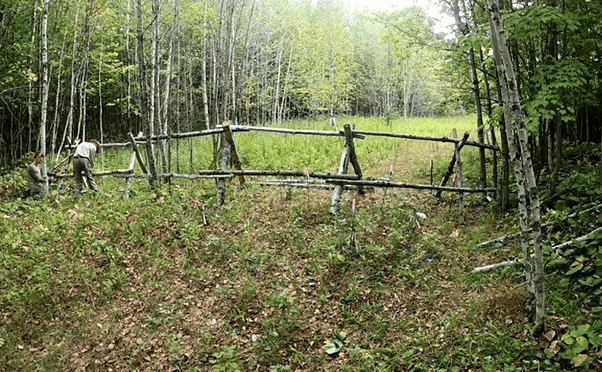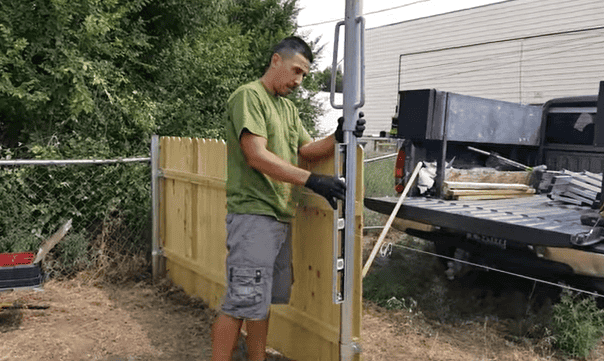Fencing secures an area, keeping unwanted guests out. It can also help improve aesthetics and define spaces. Whether you’re fencing your entire home or a small garden space, you can use many different materials, such as chicken wire, wood, and net. But one thing remains constant: the need for fence posts.
Fence posts are pillars made of different materials that provide structure and support to the fence. They are essential using materials with less defined systems. One of the most stressful parts of building a face is installing fence posts, mainly due to the need to bury the post in the ground.
If you’re looking to reduce the cost of your fence or intend to install the fence yourself as a DIY enthusiast, a no-dig fence post should be high on your priority list. The problem is that many are only conversant with conventional methods.
The conventional method of installing fence posts, however, comes with many challenges, including increased costs and labor intensiveness. Thankfully there are other ways to install these structures without digging the ground. In this guide, we’ll consider these alternatives so you can have an easier installation.
Different Ways to Fence Posts Without Digging
You don’t have to dig a hole to install fence posts, and no-dig styles exist to make your job easier. However, remember that these no-dig methods can only carry light and short fences.
1. Metal Post Anchor
The metal post anchor is a solid spike made of galvanized steel but can also be made from durable metal alloys. It features a spiked end and a box top with the spike making it easy to drive the post into the ground. In comparison, the box top is secure to the fence post. This connection between the fence post and the anchor must be secured to increase the load-bearing capacity of the fence and prolong its lifespan.
You’ll need metal post anchors, a sledgehammer, and fence posts for this method. Even though this is a no-dig idea, driving the anchor into rocky areas can be challenging. Another problem with this idea is the difficulty in achieving alignment since adjustments to the anchor are difficult.
While part of the spike stays in the ground to achieve stability, the box end holds the post. Here, you’ll need strong bolts to support the fence. Select quality anchors with those made of steel and weighing about 4 pounds are the most popular options. Remember, metal post anchors cannot carry tall fences, so you should typically keep the fence board below 4 feet.
You must mark the spots to install your fence post using metal post anchors. Ensure to insert the 1-foot area of the 4×4 post onto the anchor before hitting it with a sledgehammer. The spiked end should be completely buried, but you may need a combination of a sledgehammer and a mini sledge to drive the anchor.
The final installation piece is securing the post to the anchor. Place the pillar in the anchor box and secure it with quality bolts. Repeat the process for all the pillars. It is easier to start with the corner posts as it provides guidance.
2. Postmaster Post

A postmaster post is a type of fence post typically made from steel. It features screw holes along its length for securing your fence boards and a wider gap for anchoring them to concrete. One of the primary advantages of a postmaster post is that both sides are easily covered, removing the worrying thought of who gets the finer side of the fence.
Digging is not required with this fence post, as it is driven into the ground using a mechanized post-driving machine. It is durable and can carry taller fences over 6 feet high, unlike anchor posts. The height of the wall does not limit you with this type of fence post, so aside from its ease of installation, you also get a durable structure.
Using a mechanized tool to drive the post into the ground further boosts its ease of installation metrics, ensuring that the most work you may have to do is setting the pieces in place. You’ll need help raising the automatic post driver and holding the steel in place.
Starting your installation from one end or corner and using a string to align the other posts is best. The video guide shows how to prevent misalignment leading to a curved fence. You’ll need to take your measurements seriously to get the correct depth inside the ground for all the postmaster posts.
3. Jack Fence

A jack Fence is called several names like a jackleg, an X, or a buck and rail fence. The idea is simple: two fence posts are arranged in an “X” position, so they lean against each other and have horizontal beams across them. These fences create a rustic look for your farm or garden.
It features heavy-duty lumber used as the posts with smaller horizontal beams. You can also include barbed wires to line the fence. This fence does not require digging or driving into the ground as it sits on the soil. Its installation is one of the easiest, but you’ll need to build the jackleg posts, which can take a lot of time.
Building the jackleg posts requires much work using your chainsaw, especially to form the grooves in each piece. Making the X fence posts is labor-intensive, but when installing, you only need to balance the pillars on the ground and secure them using beans.
To hold the X logs together, drill a tap hole and then secure using a single timber screw. Nails are added when on the ground to reinforce the joint. The horizontal beams join all the posts, making it difficult to be blown away due to their weight.
4. Metal Posts Using T-Post Driver

With a T-Post driver or fence driver, as known in other places, you can drive your metal fence post to a considerable depth into the ground. Fence drivers ensure you don’t need to dig, but you’ll require a lot of energy to push the post into the soil manually.
You can adjust your post’s depth and vertical alignment as you put them inside the ground. Constantly checking the poles with a carpenter’s level as you drive it in will help you adjust the driver and post. Two brackets are required for each pillar to help attach the metal post to the wood frame.
You’ll see how to use the T-post driver inside this video guide, including how to mark the depth so you don’t miss it while inserting it. Due to the sheer energy needed for this idea, using this manual tool in rocky areas takes a lot of work. After setting the fence post to the desired height, secure the brackets, one at the bottom and the other at the top.
Using a T-post to drive your metal pole into the ground means you have control over the depth and height of the post. With this, you can install a higher fence if the posts have enough depth buried in the ground. Follow this guide as an instructor using the method to build a fence.
FAQ’s
How do you handle questions during the building process? Sometimes lingering questions about fence posts set without digging can stall your fence installation process. This section has gathered all the popular questions about this idea with their answers.
Ans: Setting fence posts without digging is more convenient, saving you time and effort. It is also more affordable as you don’t require concrete or other mixture to fill the hole. Another advantage of no-dig fence posts is that it is less disruptive to your land.
Ans: It is not the most secure, so the size of the fence it can hold is limited, with most designs featuring fences only as high as 4 feet. The type of sand in your yard affects the viability of your no-dig posts. Posts are not secure in sandy soil as the ground is too loose.
Ans: The type of safety gear you need depends on your chosen method. Wear safety goggles for styles that require chopping wood with a saw. Take extra care to avoid hitting underground utilities, especially with sharp ends like metal post anchors.
Summary
Setting fence posts without digging is unconventional but possible, with several options available to help you save money and effort. The ideas use different materials to secure fence posts, so digging is unnecessary. However, the size of the fence board you can attach is limited.
